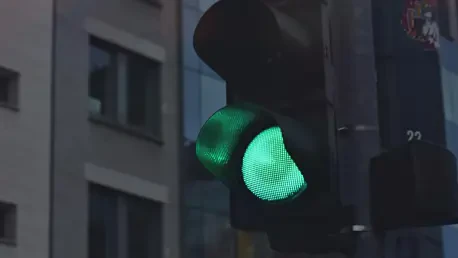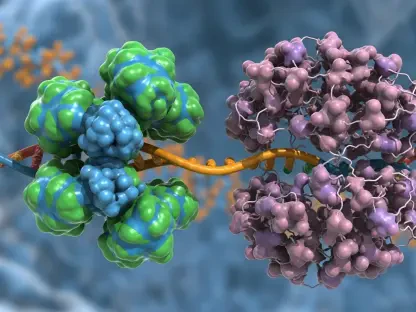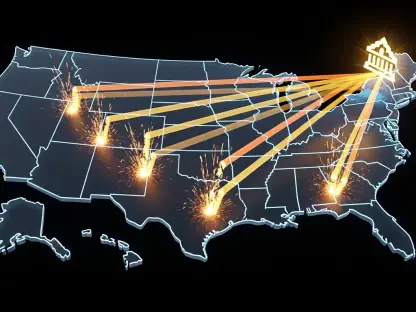Across the vast network of American highways and city streets, a silent crisis unfolds daily as drivers navigate crumbling roads and face rising risks of fatal accidents, with traffic deaths in a single state like Hawaii reaching a staggering 106 this year alone. Amid aging infrastructure and strained budgets, artificial intelligence (AI) emerges as a powerful ally, promising to transform how road hazards are detected and addressed. This exploration delves into the groundbreaking ways AI is reshaping road safety, offering hope for communities nationwide.
The Crisis on American Roads and AI’s Potential
The state of U.S. roadways paints a troubling picture, with deferred maintenance and increasing traffic volumes creating deadly conditions. Statistics reveal a sharp uptick in fatalities, compounded by the sheer scale of infrastructure—Texas alone manages over 250,000 lane miles, a daunting task for any state agency. Traditional methods of inspection and repair often fall short, unable to keep pace with the growing demands or identify risks before tragedy strikes.
AI steps into this gap with innovative tools that could redefine safety standards. By harnessing data and automation, this technology offers a proactive approach, identifying issues like potholes or faded signage before they lead to crashes. The potential to save lives and stretch limited resources further positions AI as a critical solution for governments struggling to protect their citizens on the road.
Why Innovation in Road Safety Is Non-Negotiable
Beyond the numbers, the human toll of unsafe roads demands immediate action. Families in states from California to Massachusetts bear the cost of preventable accidents, often tied to simple oversights like damaged guardrails or obscured signs. Budget constraints hinder timely repairs, leaving local officials grappling with logistical nightmares, especially in isolated regions where equipment delays are commonplace.
The urgency for new strategies has never been clearer, as conventional approaches prove too slow and costly. AI presents a lifeline, enabling faster detection of hazards and smarter allocation of resources. This shift toward technology-driven solutions addresses not just the symptoms but the root causes of infrastructure failures, paving the way for systemic change.
How AI Tools Are Changing the Game
AI is already making waves with practical applications that tackle road safety head-on. In San Jose, California, cameras mounted on municipal vehicles detect potholes and debris with a remarkable 97% accuracy rate, prompting swift repairs. This initiative showcases how automation can transform routine maintenance into a high-precision operation, reducing risks for drivers almost overnight.
Elsewhere, real-time data analytics prioritize urgent fixes with impressive efficiency. Hawaii’s “Eyes on the Road” campaign equips drivers with free dashcams to monitor infrastructure, identifying critical issues like broken guardrails. Meanwhile, Texas employs StreetVision, a tool using cellphone data to link risky driving behaviors to hidden problems, such as outdated signage, ensuring targeted interventions.
Collaboration amplifies these efforts through initiatives like the GovAI Coalition, a network of states sharing data to enhance AI learning. This collective approach means a hazard identified in Colorado can inform systems in Oregon, speeding up local responses. Such interconnected strategies highlight AI’s scalability, offering a blueprint for nationwide impact.
On-the-Ground Perspectives and Real Stories
Voices from across the country underscore AI’s transformative role in road safety. Roger Chen, a researcher at the University of Hawaii, points out that AI circumvents challenges like shipping delays for repair materials, a persistent issue in remote areas. His insights reveal how technology adapts to unique local barriers, delivering results where traditional methods falter.
In Texas, Jim Markham of the Department of Transportation hails AI as a “force multiplier,” allowing vast road networks to be assessed with unprecedented speed. San Jose Mayor Matt Mahan advocates for shared databases within the GovAI Coalition, emphasizing that collective data boosts effectiveness. A heartbreaking case in Hawaii, where a 2020 fatal crash due to an unrepaired guardrail led to a $3.9 million settlement, drives home the stakes, illustrating why AI monitoring is not just innovative but essential.
Steps for Communities to Embrace AI Solutions
For towns and cities eager to leverage AI, actionable steps provide a clear path forward. Launching pilot programs, such as equipping municipal vehicles with AI cameras, allows for testing and data collection, mirroring San Jose’s successful early efforts. These small-scale trials build confidence in the technology’s accuracy and relevance to local needs.
Partnerships with tech providers are equally vital, integrating tools like dashcam surveillance or behavioral analytics to address specific challenges, as seen in Hawaii’s post-wildfire recovery initiatives. Joining networks like the GovAI Coalition offers access to shared resources, while planning for future trends—such as infrastructure for autonomous vehicles, projected to dominate within eight years—ensures long-term readiness. This structured approach empowers any community to enhance safety through AI.
Reflecting on a Safer Path Forward
Looking back, the journey of integrating AI into road safety has marked a turning point for American infrastructure. Communities from coast to coast have begun to see tangible reductions in hazards, driven by data and innovation. The stories of lives potentially saved through timely repairs linger as powerful motivators for continued progress.
As the landscape of transportation evolves, the next steps demand bold action—scaling up pilot programs, fostering interstate collaboration, and investing in technologies that anticipate the rise of autonomous vehicles. By committing to these priorities, states and cities can build on past successes, ensuring that every road becomes a safer passage for generations to come.









